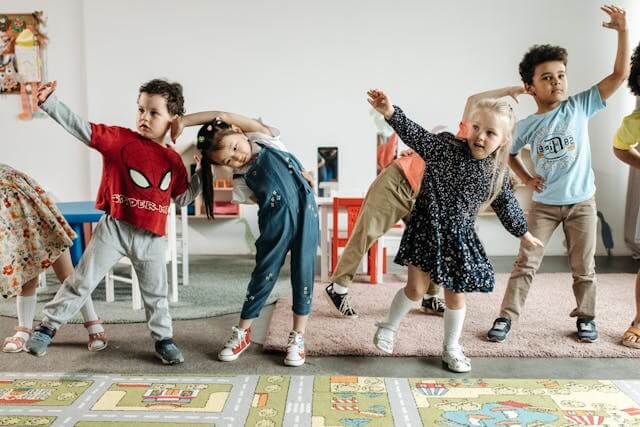ESSENTIALS TO SUPPORT CHILD DEVELOPMENT
Parents often wonder—what’s most important in the early years of child development?
Each family has its own dynamic, priorities, cultural base, and support systems. However, when adults provide warmth, love, and respect—in an environment that’s safe, stable, and predictable—it empowers children to thrive, and to feel listened to and valued. Moreover, children benefit from lots of opportunities for playful and creative engagement and exploration. Kids who are involved in happy and successful early learning experiences are more likely to be motivated to keep learning in those areas.
SUPPORTIVE MEASURES: WHAT CAN PARENTS DO?
Here are three suggestions:
1. Attunement and Encouragement
Parents can stay alert to the rhythm of their child’s development—that is, their particular ways of being—and encourage their interests and advancement as they move from one activity to another. Play often transitions to practice and perseverance, and this can lead to higher levels of challenge and to next-leveling (skill development in a specific area). Adults can stimulate and reinforce children’s involvement in a range of activities, so they see and develop connections among people, places, and things they already know, or want to know—thereby building upon those connections. Ideally, they’ll experience a healthy mix of fun, intellectual stimulation, physical exercise, and social interaction. This includes time with family, friends, and community.
2. Joy
Help kids appreciate the pleasure inherent in what they’re doing, whether having fun playing a game, being part of a collaborative endeavor, asking questions, reading, enjoying nature, or taking time for creative expression. Remember that children often have their own ideas about what they want to do or find out more about, and how they would like to learn. For example, they may be timid, tenacious, or shy. Some children like to do things independently rather than with others. Some prefer a particular time of day (the promise of early morning, or the bustle of mid-day, or the quiet of evening)—or a particular time of year (perhaps autumn as the leaves change colors, or winter when the snow and icicles glisten, or spring as the earth regenerates and flowers bloom, or summer when extended sunlight and warmth give rise to plentiful outdoor activities). Take children’s preferences into account, and continue to take note of and bolster their efforts, their reach into areas yet untapped, and their achievements.
3. Aspects of Learning
Keep in mind that children’s learning is not just about “schooling” but more about the experience of actively engaging with their world. Time spent with toys, educational puzzles, and electronic devices can be balanced with authentic, real-world engagement—such as unstructured and inventive play, and spontaneous curiosity-driven explorations that can result in improvisation, discovery, and fulfillment. Consider the value you place on imagination, investigation, and time to rest, reflect, and figure out what to do next. Children value these opportunities, too! They help kids develop important skills such as learning to manage their feelings, moods, interactions, time, behaviors, and intellectual focus. All that, in turn, can lead to success, both in the short term and in the long run.
LAST WORDS
Consider attunement and encouragement, joy, and aspects of learning—and be available to support children’s initiatives and their physical, intellectual, and social-emotional growth. For plentiful ideas, I invite you to check out the many resources on my website at https://joannefoster.ca.
ABOUT THE AUTHOR
Dr. Joanne Foster is an award-winning author of several books. For more information on learning, creativity, productivity, and children’s well-being—and to subscribe to her newsletter—go to https://joannefoster.ca.
RELATED ARTICLES
- 3 Ways to Promote Your Child’s Learning
- Things You May Not Know Affect Childhood Development
- Early Learning Essentials for Today and Tomorrow
Cover photo by Pavel Danilyuk

